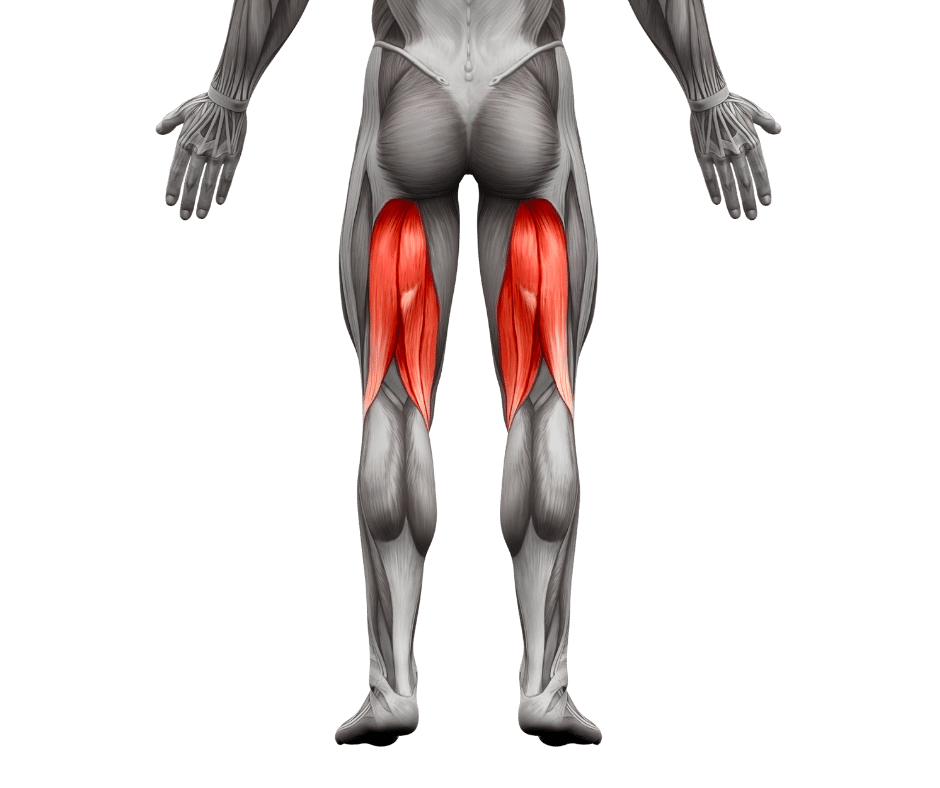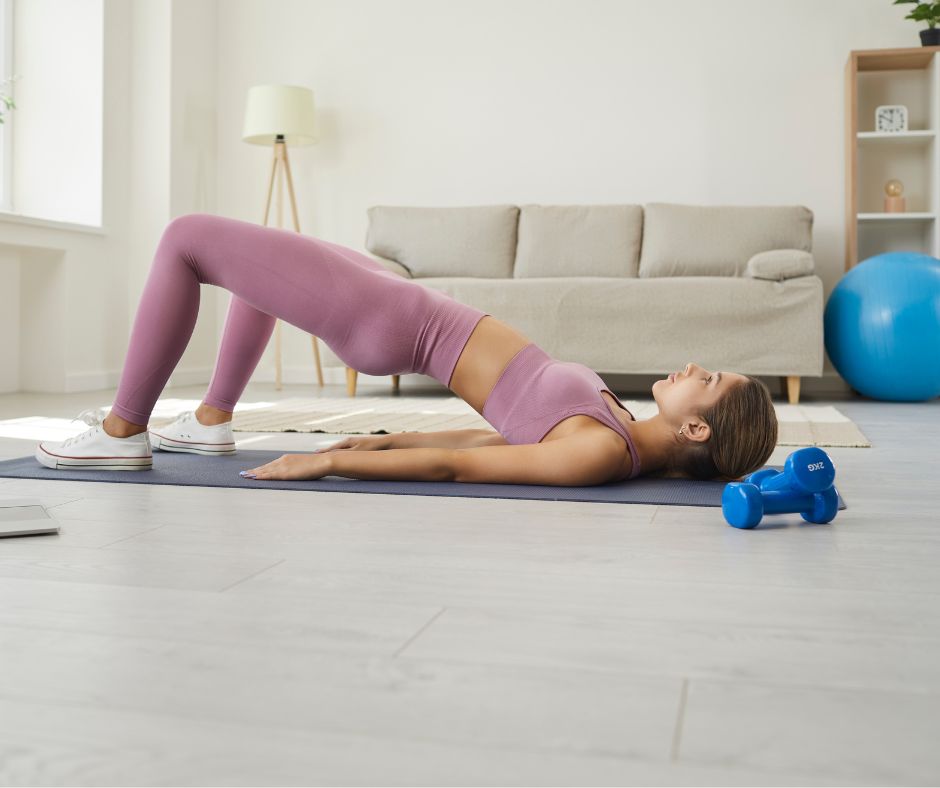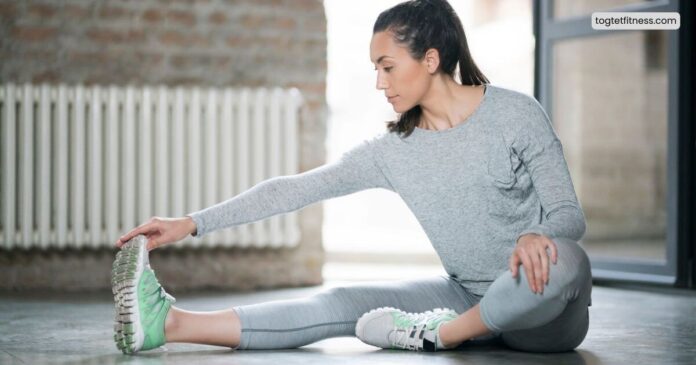Are you ready to take your leg strength to the next level? Look no further than our ultimate guide to hamstring workouts for stronger legs. Whether you’re an athlete looking to enhance your performance or simply want to increase your overall lower body strength, this comprehensive guide has got you covered. The hamstrings, a group of muscles located at the back of your thighs, play a crucial role in stabilizing your knees, improving your posture, and preventing injuries. In this guide, we will walk you through a range of effective exercises specifically targeting the hamstrings, including deadlifts, lunges, and hamstring curls. We will also provide valuable tips on proper form, recommended sets and repetitions, and ways to progress as you become stronger. Get ready to sculpt and strengthen your legs with our ultimate guide to hamstring workouts. Your journey to stronger, more powerful lower body starts here.
Anatomy and Function of the Hamstrings

Anatomy and Function of the Hamstrings
The hamstrings, consisting of three primary muscles – the biceps femoris, semitendinosus, and semimembranosus – are located at the back of your thighs. These muscles are responsible for extending the hip joint, flexing the knee, and assisting with rotation of the lower leg. Their strong and flexible nature allows for a wide range of lower body movements, such as walking, running, and jumping.
To fully understand the importance of hamstring workouts, it’s essential to grasp their role in maintaining overall leg strength and stability. Strong hamstrings contribute to proper knee alignment, preventing potential injuries and reducing stress on the joints. Additionally, well-developed hamstrings enhance athletic performance by providing power and explosiveness for movements like sprinting and jumping.
Also Read: The Ultimate Triceps Workout with Dumbbells
Benefits of Strong Hamstrings
Having strong hamstrings offers numerous benefits beyond aesthetics. Let’s take a closer look at the advantages of incorporating hamstring workouts into your fitness routine:
1. Injury Prevention: Weak hamstrings can lead to imbalances in the leg muscles and improper biomechanics, increasing the risk of knee injuries, strains, and tears. Strengthening the hamstrings helps to stabilize and protect the knees, reducing the likelihood of such injuries.
2. Improved Posture: Weak hamstrings may contribute to poor posture, leading to lower back pain and discomfort. By strengthening the hamstrings, you can correct muscle imbalances and promote a more upright posture, resulting in better overall spinal alignment.
3. Enhanced Athletic Performance: Strong hamstrings are essential for explosive movements, such as sprinting, jumping, and changing direction quickly. By targeting and strengthening these muscles, athletes can improve their speed, power, and agility, leading to better performance in their respective sports.
4. Increased Lower Body Strength: Hamstring workouts not only target the hamstrings but also engage other leg muscles, such as the glutes and quadriceps. This comprehensive leg training helps to develop overall lower body strength, making everyday activities easier and more efficient.
Incorporating hamstring workouts into your fitness routine not only enhances your leg strength but also provides a solid foundation for overall physical well-being. By taking care of your hamstrings, you can prevent injuries, improve posture, and boost athletic performance.
Common Hamstring Injuries and How to Prevent Them
Hamstring injuries are prevalent among athletes and individuals who engage in activities that involve explosive leg movements. These injuries can range from mild strains to more severe tears. To prevent hamstring injuries, it’s essential to understand the common causes and implement preventive measures.
1. Muscle Imbalances: Imbalances between the hamstrings and quadriceps can put excessive strain on the hamstrings, leading to potential injuries. It’s crucial to maintain a balanced leg training routine that targets both muscle groups equally.
2. Inadequate Warm-up: Failing to warm up properly before engaging in intense physical activities can increase the risk of hamstring injuries. Incorporate dynamic stretching exercises, such as leg swings and walking lunges, to warm up the hamstrings and prepare them for the workout.
3. Overtraining: Pushing your body beyond its limits without allowing sufficient rest and recovery can lead to muscle fatigue and increased susceptibility to injuries. It’s important to listen to your body and give yourself enough time to recover between workouts.
Preventing hamstring injuries requires a combination of proper training techniques, adequate warm-up, and smart recovery strategies. By addressing potential risk factors and implementing preventive measures, you can reduce the likelihood of hamstring injuries and maintain strong, healthy legs.
Types of Hamstring Exercises – Stretching, Strengthening, and Stabilizing
To fully develop your hamstrings, it’s essential to incorporate a variety of exercises that target different aspects of muscle function – stretching, strengthening, and stabilizing. Let’s explore each type of exercise and its benefits:
1. Stretching: Hamstring stretches help improve flexibility and increase the range of motion in the muscles. Dynamic stretching exercises, such as inchworms and standing leg swings, are effective for warming up the hamstrings before a workout. Static stretches, like seated forward bends and lying hamstring stretches, can be performed after a workout to improve flexibility and promote muscle recovery.
2. Strengthening: Strengthening exercises target the hamstrings directly, helping to build muscle mass and improve overall leg strength. Examples of strengthening exercises include deadlifts, hamstring curls, and kettlebell swings. These exercises can be performed using bodyweight, resistance bands, or gym equipment, depending on your fitness level and available resources.
3. Stabilizing: Stabilizing exercises focus on improving the function and coordination of the hamstrings with other leg muscles. Exercises like lunges, step-ups, and single-leg deadlifts challenge the hamstrings to stabilize the body during dynamic movements, enhancing overall lower body stability and balance.
Incorporating a combination of stretching, strengthening, and stabilizing exercises into your hamstring workouts ensures a well-rounded training routine that targets all aspects of muscle function. By incorporating a variety of exercises, you can maximize your hamstring development and achieve stronger, more powerful legs.
Hamstring Workout Routines for Beginners
If you’re new to hamstring workouts, it’s crucial to start with beginner-friendly exercises that allow you to build a solid foundation of strength and technique. Here’s a sample hamstring workout routine suitable for beginners:
1. Bodyweight Glute Bridge: Lie on your back with knees bent and feet flat on the ground. Lift your hips off the ground, squeezing your glutes and engaging your hamstrings. Hold for a few seconds, then lower back down. Perform 3 sets of 12-15 repetitions.

2. Resistance Band Deadlift: Stand with your feet hip-width apart, a resistance band wrapped around your thighs. Hinge at the hips, keeping your back straight, and lower the weights towards the ground. Engage your hamstrings and glutes to return to the starting position. Perform 3 sets of 10-12 repetitions.
3. Walking Lunges: Take a step forward with your right foot, lowering your body until both knees are bent at a 90-degree angle. Push off with your right foot to bring your left foot forward, repeating the motion. Perform 3 sets of 10-12 lunges per leg.
Remember to start with lighter weights or resistance bands and gradually increase the intensity as you become more comfortable with the exercises. Focus on maintaining proper form and engaging the hamstrings throughout each movement.
Hamstring Workout Routines for Intermediate and Advanced Levels
Once you’ve mastered the basics, it’s time to challenge your hamstrings with more advanced exercises. Here’s a sample hamstring workout routine suitable for intermediate and advanced levels:
1. Romanian Deadlift: Stand with your feet hip-width apart, holding a barbell or dumbbells in front of your thighs. Hinge at the hips, keeping your back straight, and lower the weights towards the ground. Engage your hamstrings and glutes to return to the starting position. Perform 4 sets of 8-10 repetitions.
2. Single-Leg Hamstring Curl: Lie face down on a leg curl machine or stability ball, keeping one leg extended and the other bent at the knee. Curl the weight towards your glutes, engaging your hamstrings. Slowly lower the weight back down and repeat. Perform 3 sets of 10-12 repetitions per leg.
3. Bulgarian Split Squat: Stand with one foot in front of the other, resting the back foot on a bench or step. Lower your body by bending your front knee until both knees are at a 90-degree angle. Push off with your front foot to return to the starting position. Perform 3 sets of 10-12 repetitions per leg.
As you progress to intermediate and advanced levels, it’s important to challenge yourself with heavier weights, higher repetitions, or more complex variations of the exercises. Always prioritize proper form and listen to your body to avoid overexertion and potential injuries.
Incorporating Hamstring Exercises into Your Overall Leg Workout Routine
While hamstring workouts are essential for developing strong and powerful legs, it’s equally important to incorporate them into a comprehensive leg training routine. Here’s a sample leg workout routine that includes hamstring exercises:
1. Barbell Squat: 4 sets of 8-10 repetitions
2. Walking Lunges: 3 sets of 10-12 lunges per leg
3. Single-Leg Hamstring Curl: 3 sets of 10-12 repetitions per leg
4. Bulgarian Split Squat: 3 sets of 10-12 repetitions per leg
5. Romanian Deadlift: 4 sets of 8-10 repetitions
By combining compound exercises like squats and lunges with targeted hamstring exercises, you can ensure balanced development of your leg muscles. Always prioritize proper form and adjust the weights or repetitions based on your fitness level and goals.
Tips for Maximizing the Effectiveness of Your Hamstring Workouts
To get the most out of your hamstring workouts, consider the following tips:
1. Focus on Mind-Muscle Connection: Concentrate on engaging and squeezing your hamstrings during each exercise. This helps to activate the targeted muscles and maximize their development.
2. Progress Gradually: Start with lighter weights or resistance bands and gradually increase the intensity as you become stronger and more comfortable with the exercises. This allows for safe and sustainable progress.
3. Vary Your Repetition Range: Incorporate both higher repetitions (12-15) and lower repetitions (8-10) into your workouts. This helps to target different muscle fibers and promote overall muscle growth.
4. Allow for Sufficient Recovery: Give your hamstrings enough time to recover between workouts. Aim for at least 48 hours of rest before targeting the same muscle group again.
5. Maintain Proper Form: Focus on maintaining proper form throughout each exercise to prevent injuries and ensure maximum muscle activation. If you’re unsure about proper technique, consider working with a qualified trainer.
By implementing these tips into your hamstring workouts, you can optimize your training and achieve stronger, more defined legs.
Common FAQs about Hamstring Workouts
How often should I train my hamstrings?
Can I do hamstring workouts at home without equipment?
What if I feel tightness in my hamstrings after a workout?
Are hamstring curls only for advanced fitness levels?
Can I do hamstring workouts if I have a hamstring injury?
How long will it take to see results in my hamstring strength?
Conclusion and Final Thoughts
Strong hamstrings are essential for overall lower body strength, stability, and athletic performance. Incorporating hamstring workouts into your fitness routine helps prevent injuries, improve posture, and enhance leg strength. By targeting the hamstrings through a combination of stretching, strengthening, and stabilizing exercises, you can develop well-rounded leg muscles and achieve a more powerful lower body.
Remember to start with beginner-friendly exercises if you’re new to hamstring training and gradually progress to more advanced movements as you become stronger. Always prioritize proper form, listen to your body, and allow for sufficient rest and recovery between workouts.
With our ultimate guide to hamstring workouts, you have the knowledge and tools to take your leg strength to the next level. Whether you’re an athlete looking to improve performance or simply want to enhance your overall physical fitness, these exercises and tips will help you sculpt and strengthen your legs. Start your journey to stronger, more powerful lower body today!
